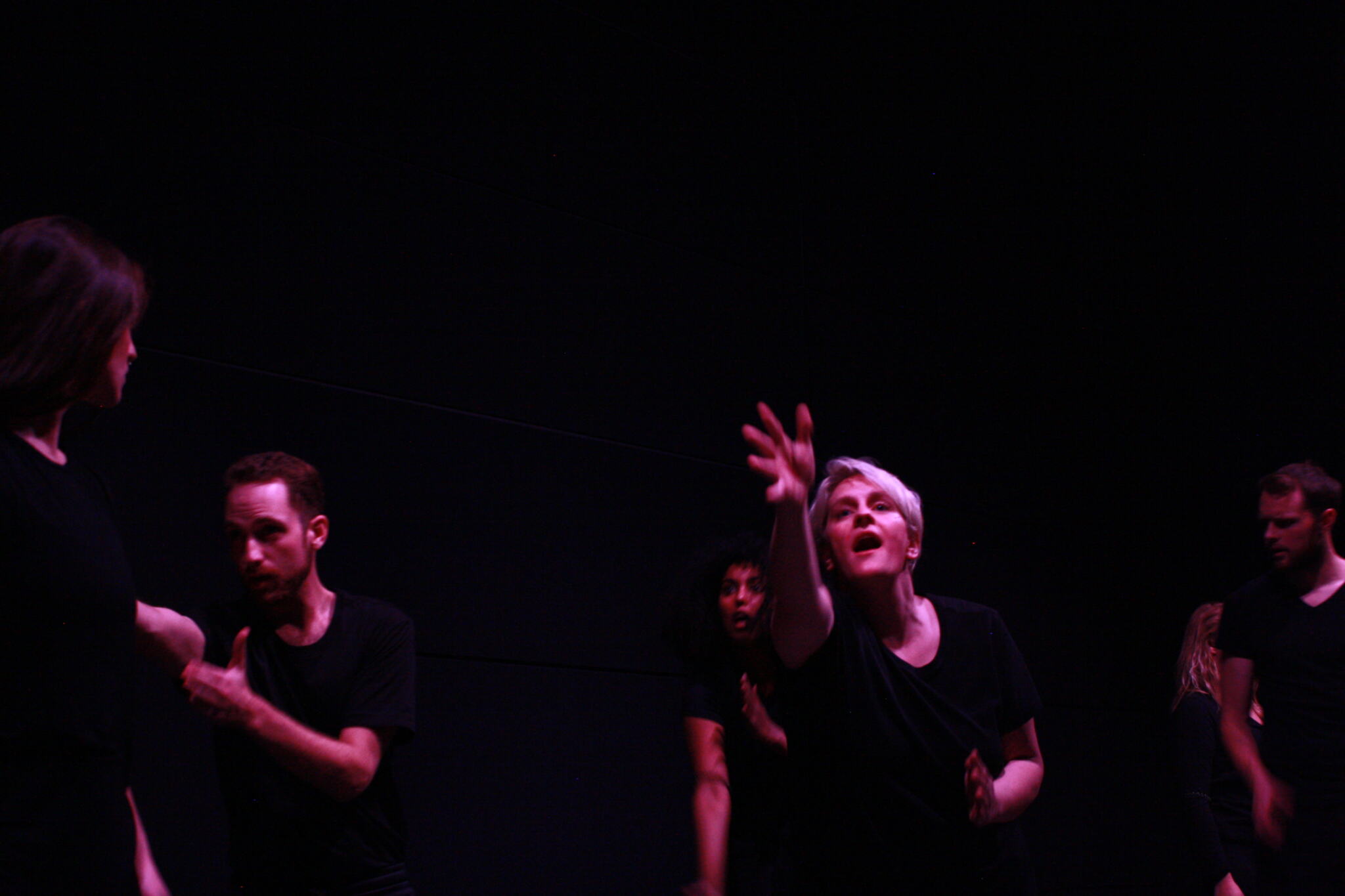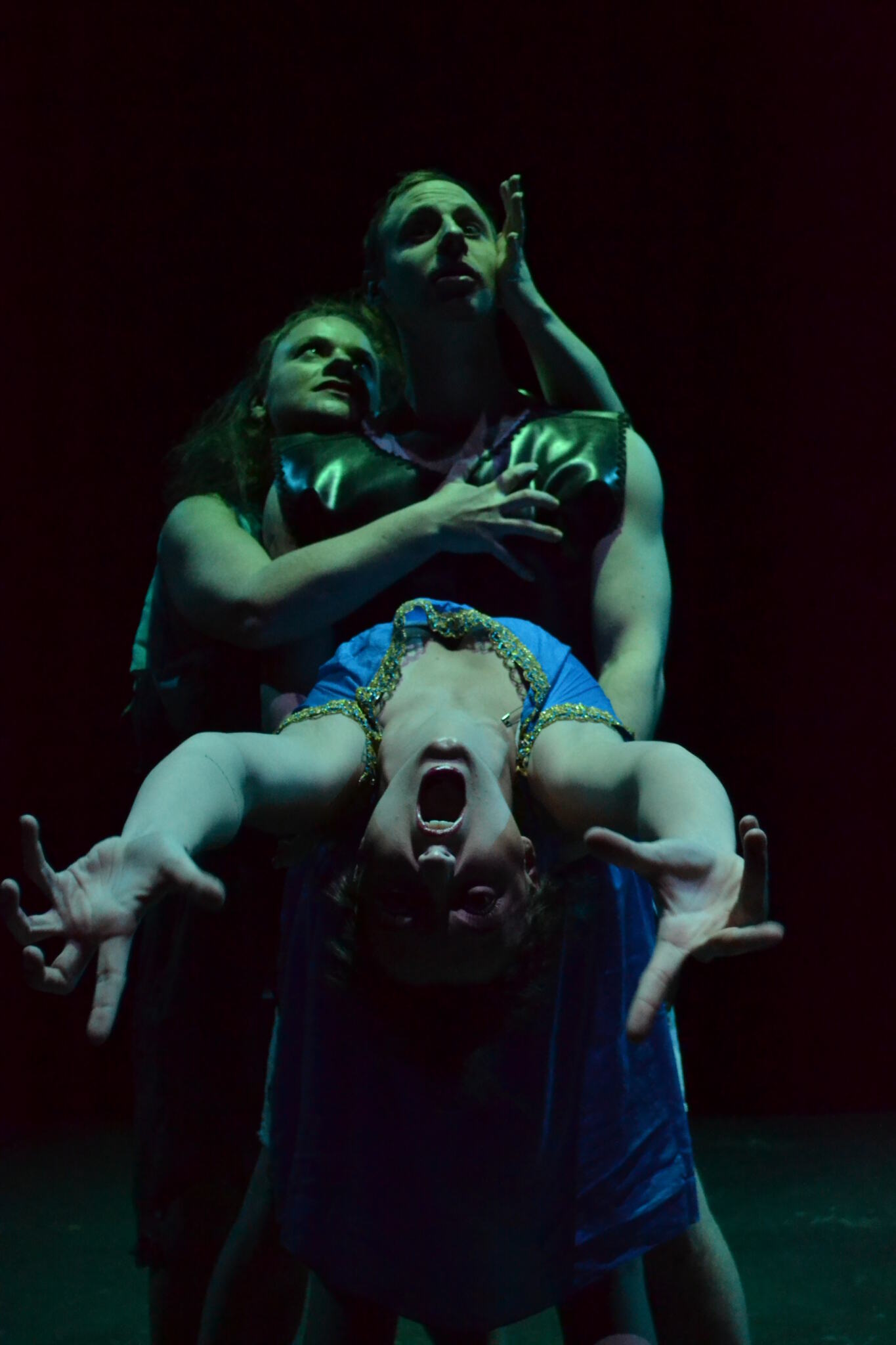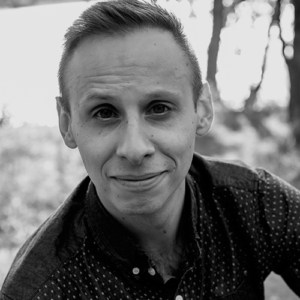
I’ve been thinking a great deal about different forms of theatre lately and there’s one that I can’t get out of my head. Theatre is, by its nature, collaborative. That’s what I really love about it. It’s what makes the art form so alive. When an author writes a book, there’s usually only one interpretation of the text: the reader. Of course, there’s input from the editors, the publishers, etc., but in the actual ingestion of the art it goes from the words that were written by the creator straight into the mind of the reader and that reader interprets the story.
Each of these add an interpretation to the text and when the audience experiences the art, when they watch the play, they’re seeing the fruit of numerous collaborations across different disciplines. This is what makes the performing arts, whether it be theatre or film or dance, so compelling.
There’s a method of theatre creation that takes this premise, the premise of artistic collaboration being the heartbeat of live performance, and ramps it up even farther. It’s called devised theatre.
Last fall, I had the absolute pleasure of being one of the four directors of Jupiter Theatre’s workshop presentation of FOUR , which was a devised theatre creation by the newly formed Jupiter Ensemble Theatre Syndicate (lovingly called the JETS). The process was incredible, and it really reminded me about why I love collaboration so much. Now you may be asking, “What is devised theatre?” and possibly, “what do you mean you were one of four directors?”. Well, that is precisely why I’m writing this.

Defining devised theatre is tricky because there are so many different groups and companies that explore devised theatre and they all have their own practices and methodologies that they adhere to. Wonderful companies like Frantic Assembly, Push Physical Theatre, and Calgary’s very own One Yellow Rabbit spring to mind. Sometimes a group will start with a theme or a story to adapt, sometimes the show is generated from text or just from movement. There are so many ways to begin a new work of devised theatre. They do, I think, have some things in common. John Walton, the artistic Director of Fol Espoir, wrote in The Guardian that devised theatre is, “a process in which the whole creative team develops a show collaboratively. From actors to technicians, everyone is involved in the creative process.”
I first really got into devising theatre, before I had that terminology for it, when I attended the Banff Puppet Theatre Intensive put on by the Old Trouts Puppet Workshop in 2016. I had done a bit of collective creation work while doing my undergraduate degree, but after I graduated I was seeking more training to further myself as an artist and this program came to my attention. During the intensive we collaborated on a piece based on the text of the poem Jabberwocky by Lewis Carrol, the author of Alice in Wonderland. (This was, of course, before The Old Trouts fabulous production called Jabberwocky, which premiered in Edmonton 2017.) Our final puppet project at the intensive was also a devised creation, using puppets, masks, and object manipulation, and after that I was hooked on this way of creating and presenting theatre.
Melissa Purcha, who I attended the Banff intensive with, and I went on to create our first devised theatre piece together later that year with Maddison Hartloff and Nich Gulyz. The show was an adaptation of Euripides’ fragmented play Andromeda. We titled it Perseus & Andromeda and it was presented by Chimera Theatre at the Victoria Fringe Festival in 2016. The show was a great success and it went on to win the Best of Fest and Best Show Design awards at the 2018 Hydra Performing Arts Festival in Kamloops. Using similar techniques (and building on what we learned from this show) Melissa, Maddison, and I went on to collaborate on The Robber Bridegroom with Chimera Theatre and Jupiter Theatre last year with Brittney Martens. That show went on to tour from Kamloops to Calgary, Regina, Winnipeg, Vancouver, and Victoria and it received rave reviews across Western Canada.

With both of these productions, performers were changed for the tours of the shows (for various reasons) and I loved seeing how much the projects grew and evolved and changed with new performers. It wasn’t at all just a case of new performers coming in and learning the tracks of a show that was already established. In devised theatre, new performers means new lenses and new ideas and this creates new dynamics for the show.
As a playwright, I honestly love this sort of work. At the same time I was working on FOUR, my one act show One Day is opening at the Paragon Festival at Otherworld Theatre in Chicago, IL. Another script of mine, The Cooney Papers, is closing at Tranquille Tunnel Theatre in Kamloops, BC. I’m so grateful that my work as a playwright is being produced around North America. I absolutely love that my words are being interpreted by other artists and being shown to other audiences, but I really yearn to be more hands on with the artistic process. I love to work with directors and designers and performers. As Aaron Burr says, “I want to be in the room where it happens!”
Devised theatre skips over the step of the playwright and/or director and/or company coming up with an idea for a show and writing the text of it. The text, if there is text in the show, and the movement and design of the show come from within the ensemble of artists.
The team, whether they be directors, designers, dancers, or whatever, interpret together right from the beginning. This is so powerful because it allows for a group of artists to create something as a whole that no one of them could have created individually. An idea is brought up in the process and that inspires two more ideas from other artists and then this creates something totally new and different and whether or not the first idea is used doesn’t matter because the art is constantly evolving and moving forward. Traditional rehearsal processes are like this (at least the open and collaborative ones that I enjoy), but devised theatre actively creates a space for this to occur.

There’s power in working together as artists. There’s power in breathing together in a space with other humans. This is why theatre is so impactful. When watching the show something that really struck me is that the audience was breathing together with the performers throughout the show. I could hear the audience let out their breath with the performers as they exhaled at the end of a scene. I could hear them breathing together in moments of tension. As I mentioned in my post about why new Canadian Theatre is important , research from University College London from 2017 found that audience members’ hearts beat in unison and, as obvious as it seems, they breathe together too. “Experiencing the live theatre performance was extraordinary enough to overcome group differences and produce a common physiological experience in the audience members.” A common physiological experience. Breathing together. Hearts beating in unison. This is what the power of devised theatre creates.
According to an article in the Theatre Times, “Devised Theatre has become a strong tool in creating conversations within an audience”. I couldn’t agree more. All the artists are interpreters and collaborators in devised theatre and audiences become the final collaborators because they are the final interpreters. One hundred people watching the same show will come up with one hundred different interpretations of the play because each audience member enters the theatre with their own backstory, with their own baggage and ideals and political views and loves and fears. I think that’s really beautiful.
A Director Tells: 15 Things You Should Know When You Are Auditioning
Does New Canadian Theatre Matter?


Andrew G. Cooper is a queer Canadian director, playwright, and performer. He holds his Bachelor of Arts in Theatre Arts from Thompson Rivers University and is the recipient of the Kamloops Mayor’s Emerging Artist Award. He won two awards for Outstanding Choreography for his work in Musical Theatre with the Academy of Dance and is the founding Artistic Managing Director of Chimera Theatre in Kamloops, BC and the founding Artistic Producer of Jupiter Theatre in Calgary, AB. As a director and theatre artist, Andrew’s focus is on the creation of new works with a particular focus on interdisciplinary art and storytelling through non-verbal mediums such as movement, puppetry, mask, and stage combat. His directing credits include The Three Munsch-keteers (Project X Theatre), Mockus (Chimera Theatre), and The Theodore Roosevelt Rotunda (Thompson Rivers University). He wrote and directed One Day, The Untold Tales of the Brothers Grimm, Knights of the Sun, Frankenstein (Chimera Theatre), Crossroads, The Disordered Mind, The Witness, Padova: The Untold Story (Tranquille Tunnel Theatre), and The Grind (Western Canada Theatre’s High-Wire Festival). He has been fortunate to work at such incredible companies as BC Living Arts, Citadel Theatre, Catalyst Theatre, and Theatre: Calgary. Perseus & Andromeda, which he co-created with Melissa Purcha, won the Best Design and Best of Fest awards at the 2018 Hydra Performing Arts Festival and his production of The Untold Tales of the Brothers Grimm was nominated for Best New Play and Best Comedy at the 2015 Victoria Fringe Festival. He also co-created a puppet adaptation of The Robber Bridegroom with Melissa Purcha, which played in Kamloops and Calgary in 2019. His short play The Grind won first place in Theatre New Vintage’s 10-Minute Playwriting Competition and then went on to win Third Place in the Judge’s Choice for the Wildcard Finals of the 2018 Sydney Short + Sweet Festival. Two other short plays, Dispatch and Phobia, were finalists of Theatre New Vintage’s 10-Minute Playwriting Competition in 2019 and Dispatch went on to premiere at the Newmarket National Playwriting Festival in Ontario later that year. Andrew also wrote SuperZeroes and did the choreography and fight direction for its first production with Chimera Theatre in 2016. Andrew is a lover of astronomy and animals and currently lives in Calgary, AB.
Read Full Profile© 2021 TheatreArtLife. All rights reserved.

Thank you so much for reading, but you have now reached your free article limit for this month.
Our contributors are currently writing more articles for you to enjoy.
To keep reading, all you have to do is become a subscriber and then you can read unlimited articles anytime.
Your investment will help us continue to ignite connections across the globe in live entertainment and build this community for industry professionals.